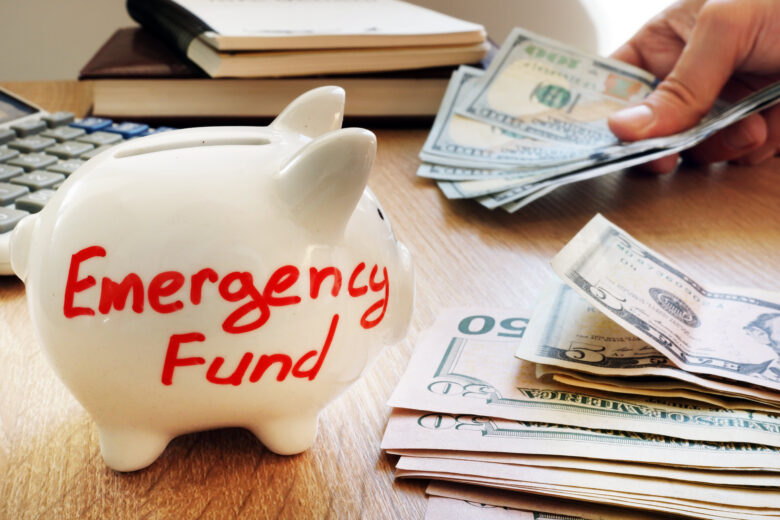Paying off debt can feel like running a marathon with a heavy backpack. Every extra dollar seems precious, and the temptation to throw everything at those credit card balances or student loans is strong. Many financial advisors even recommend the debt avalanche or snowball method, which involves putting all available funds toward debt elimination. But here’s the reality: life doesn’t pause while you’re getting your finances in order. Your car might break down, you could face a medical emergency, or your employer might downsize. Without an emergency fund, these unexpected expenses can derail your debt payoff progress and potentially push you deeper into financial trouble.
The key isn’t choosing between debt repayment and emergency savings—it’s finding the right balance that protects you from both current debt and future financial shocks. While it may seem counterintuitive to save money while carrying high-interest debt, building a modest emergency fund alongside your debt payments creates a financial safety net that can prevent you from accumulating even more debt when life presents unexpected challenges.
The Unexpected Happens
Car repairs are among the most common unexpected expenses. Your transmission could fail on the same day you planned to make an extra debt payment. Medical bills can arrive without warning, even with health insurance. Home repairs don’t wait for convenient times—a leaking roof or broken furnace demands immediate attention regardless of your financial priorities.
Job loss represents perhaps the most devastating financial emergency. Even temporary unemployment can last several months, during which time your regular debt payments become impossible to maintain. Without any emergency savings, you’ll likely need to rely on credit cards or personal loans to cover basic living expenses, adding to your existing debt burden.
The psychological impact of these emergencies extends beyond the immediate financial strain. When you’re already stressed about debt, an unexpected expense can feel overwhelming and may lead to poor financial decisions made under pressure. Having even a small emergency fund provides peace of mind and helps you make rational choices during stressful situations.
Debt vs. Emergency Fund
The mathematical argument against emergency funds while in debt seems straightforward. If your credit cards charge 18% annual interest and your savings account earns 2%, you’re technically losing money by saving instead of paying down debt. This logic has led many financial experts to recommend focusing solely on debt elimination.
However, this purely mathematical approach ignores human behavior and real-world complications. When emergencies arise without savings to cover them, you’ll likely need to use credit cards or take out loans, potentially at even higher interest rates than your existing debt. Emergency loans often come with unfavorable terms, and credit card cash advances typically carry higher interest rates and immediate interest charges.
Consider the cycle that develops without emergency savings. You make progress paying down debt, then face an unexpected expense. You charge it to a credit card, setting back your debt payoff progress. This pattern can repeat indefinitely, making it nearly impossible to achieve lasting financial stability
Some debt situations do warrant pausing emergency fund contributions temporarily. If you’re facing immediate consequences like foreclosure or vehicle repossession, directing all available funds toward preventing these outcomes makes sense. However, for most people carrying typical consumer debt, a balanced approach proves more effective long-term.
The Emergency Fund Safety Net
An emergency fund serves as financial insurance, protecting your debt payoff progress from unexpected setbacks. Even a modest emergency fund of $500 to $1,000 can cover many common unexpected expenses without requiring new debt. This small buffer can mean the difference between a minor financial inconvenience and a major setback.
The emergency fund should remain easily accessible but separate from your regular checking account. A basic savings account works well, even if the interest rate is low. The goal isn’t investment growth—it’s immediate availability when needed. Online savings accounts often offer slightly higher interest rates while maintaining easy access to your funds.
When you do use emergency funds, prioritize replenishing them before resuming aggressive debt payments. This discipline ensures your safety net remains intact for the next unexpected expense. Many people make the mistake of using their emergency fund and then forgetting to rebuild it, leaving themselves vulnerable to the next financial shock. The psychological benefits of an emergency fund often exceed the financial benefits. Knowing you can handle small emergencies without derailing your debt payoff progress reduces financial stress and helps you maintain motivation. This peace of mind can improve your overall decision-making and help you stick to your financial plan long-term.
Finding the Balance
Creating the right balance between debt payments and emergency savings requires a personalized approach based on your specific situation. Start by assessing your current debt levels, monthly expenses, and job stability. Someone with secure employment might maintain a smaller emergency fund than someone in a volatile industry.
Your emergency fund size should reflect your personal risk factors. Do you own a home with potential repair needs? Do you have children or aging parents who might require unexpected support? Is your job secure, or do you work in an industry prone to layoffs? Higher risk factors justify larger emergency funds, even while carrying debt.
Consider your debt types when determining the balance. High-interest credit card debt deserves more aggressive attention than low-interest student loans or mortgages. You might maintain a larger emergency fund while paying minimums on low-interest debt but build only a starter fund while eliminating high-interest balances.
Building Financial Resilience Takes Time
Creating lasting financial stability requires both eliminating debt and building emergency savings. While it might seem counterintuitive to save money while carrying debt, a modest emergency fund protects your progress and reduces financial stress. Start small, stay consistent, and remember that building financial resilience is a marathon, not a sprint. By maintaining this balanced approach, you’ll be better equipped to handle life’s surprises without derailing your long-term financial goals.
FAQs
1. Should I stop contributing to my emergency fund once I reach $1,000?
While paying off debt, it’s generally best to pause emergency fund contributions after reaching your initial goal of $500-$1,000. Please prioritize allocating your extra funds towards debt repayment, and once your debt is cleared, kindly resume building your emergency fund.
2. What counts as a true emergency for using this fund?
True emergencies are unexpected expenses that are necessary and urgent. This category includes job loss, medical emergencies, essential home repairs, or car problems that prevent you from working. It doesn’t include vacations, holiday gifts, or planned purchases.
3. Should I keep my emergency fund in a high-yield savings account?
Yes, it is ideal to keep your emergency fund in a separate, easily accessible high-yield savings account. This feature prevents you from accidentally spending it while still earning some interest on the money.




